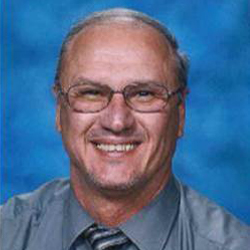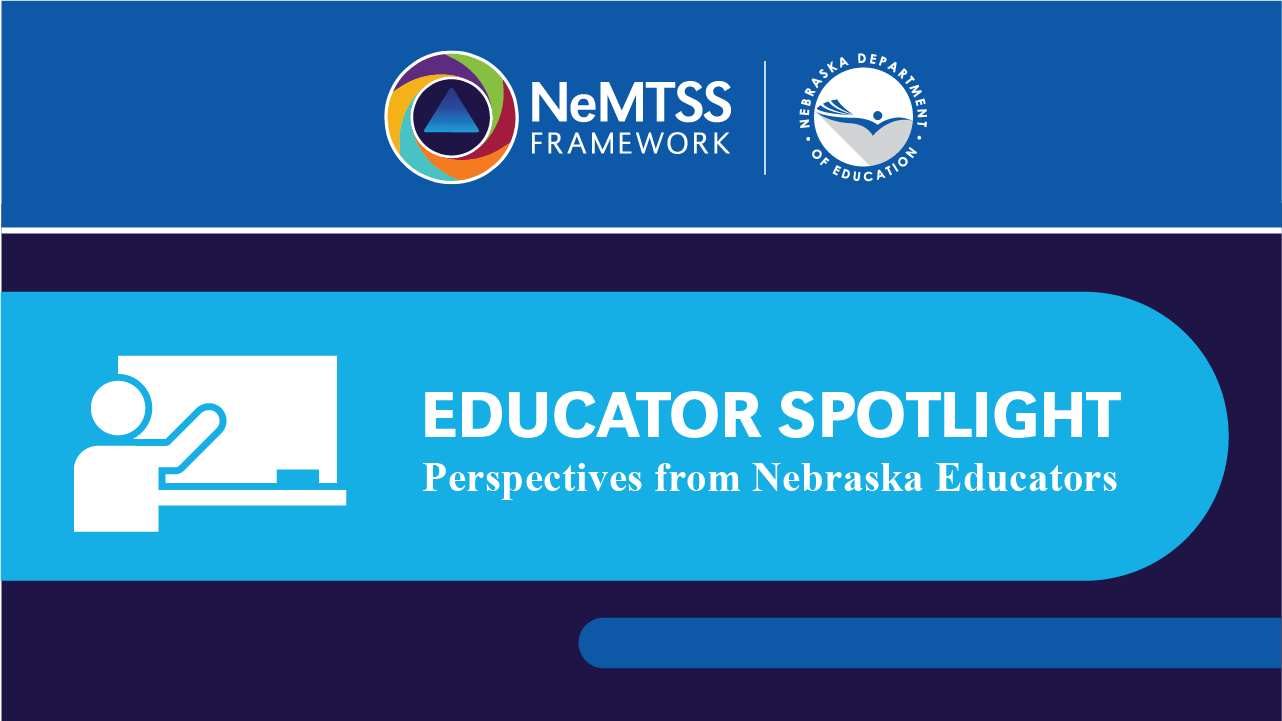
Steve Dike, Principal
Ainsworth High School & Middle School
Ainsworth, Nebraska
How long have you been in education?
Steve Dike: 33 years
Can you briefly describe your work with NeMTSS?
SD: As a member of the Ainsworth Public Schools administrative team, I work with our Continuous Improvement Plan (CIP) team, MTSS coordinator and Educational Service Unit (ESU) to develop and implement support structures, grow MTSS capacity within staff, review and strengthen our core instruction and work with teachers to develop and review intervention activities.
How do you use NeMTSS principles in your daily work?
SD: With the help of staff and ESU personnel, we are slowly changing the culture to move MTSS principles from being “something we do” to “how we do business.” A big growth point has been using data to guide decisions rather than simply collecting and ignoring it, especially at the high school level. Conversations across the board at the high school level have moved from being strictly about content to being about results and support for all learners.
What were your feelings about NeMTSS before you began working with it?
SD: I have been at Ainsworth Community Schools (ACS) for three years. Prior to that, I spent 17 years in Kansas as the principal of a high school of just over 900 students. Some MTSS concepts were mandated but poorly monitored. In 2015-16, the State of Kansas contracted with the Technical Assistance System Network (TASN) to guide the implementation, which was a great opportunity to develop leadership teams and focus teams while strengthening the professional learning community (PLC) process and true collaboration among staff to solve educational issues for students. This foundation, coupled with NeMTSS to point me to resources available in Nebraska, has moved me professionally to view the MTSS as a foundational guiding force to how all schools should operate.
Can you tell us about an experience with a student that was made better because of your training with NeMTSS?
SD: We have had multiple experiences where we were able to identify a student through screeners and provide interventions to close the gap and get the student back to an on grade level of performance. When I first arrived at ACS, the previous elementary principal had unilaterally selected a reading series that was limited in effectiveness and was not supported by staff. This was used in a very spotty manner by kindergarten through fourth grade teachers and our fifth through eighth grade teachers had chosen to opt out of purchasing the resource.
To make a long story short, we educated staff on the importance of a seamless K-12 approach to education, the importance of an effective core resource, the need to collect and USE data that measures fidelity of implementation and the development of interventions. We will be in year one of implementation of the core resource with intervention time for all students. In fact, we have seen more than 90% of our seventh graders and 86% of our eighth graders meet their growth measures on Measurement of Academic Progress tests for the winter testing cycle. Getting staff to view students from the appropriate lenses is key to showing growth for all students.
What would you tell educators that haven’t heard of MTSS yet?
SD: My advice would be to find resources and people who support the system and ask as many questions as possible. There are incredible resources tied to NeMTSS and, as you learn more about the process, it helps you create guiding principles for all facets of culture, climate and processes for any building or district.
What is a goal you have for yourself, your building, or your classroom that MTSS can help you reach?
SD: Having worked through implementation before in another district, my goal is to find the balance between pace and teacher tolerance. I frequently try to move too fast and not look over my shoulder to see if others are coming with me. I want to see a lot, discuss a lot and proceed at a pace that does not overwhelm those in the trenches.



